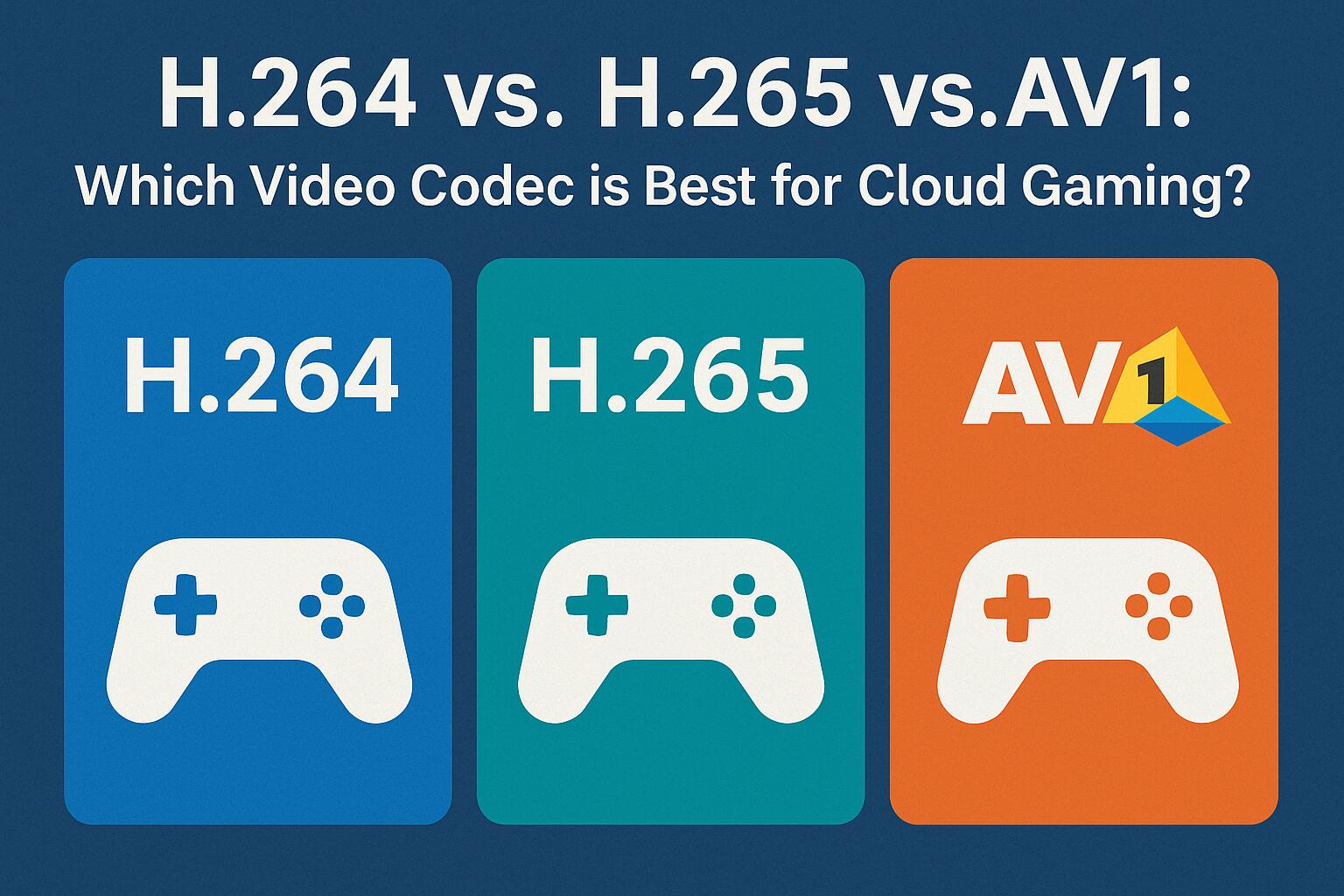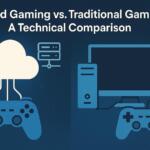Video codecs play a crucial role in video compression, affecting video quality, streaming performance, and overall user experience. In the context of cloud gaming, choosing the right codec is particularly important, as it impacts latency, bandwidth usage, and the quality of the streaming experience. Three video codecs often discussed in cloud gaming are H.264, H.265 (HEVC), and AV1. Each codec has its own advantages and drawbacks, making it essential to understand how they perform in the demanding environment of cloud gaming.
H.264: The Industry Standard
H.264, also known as AVC (Advanced Video Coding), has been the dominant video codec for nearly two decades. It is widely used for video streaming, video conferencing, and video storage due to its efficient compression and broad compatibility. However, when it comes to cloud gaming, the benefits and limitations of H.264 must be understood.
One of the key advantages of H.264 is its extensive hardware support. Most devices, from smartphones to gaming consoles, can decode H.264 with minimal effort. This compatibility ensures that cloud gaming services relying on H.264 can reach a broad audience without requiring specialized hardware or software.
Despite its widespread adoption, H.264 has a significant drawback in cloud gaming: efficiency. While H.264 provides decent compression, it struggles to match the higher performance of newer codecs like H.265 or AV1. In a cloud gaming scenario, where video streams are constantly transmitted with minimal delay, this inefficiency can lead to higher bandwidth usage, increased latency, and potential quality loss during fast motion scenes.
H.265 (HEVC): Improved Efficiency
H.265, or HEVC (High-Efficiency Video Coding), was designed to improve upon the limitations of H.264. It achieves approximately 50% better compression efficiency, meaning that it can deliver the same quality at half the bitrate, or better quality at the same bitrate. This improvement is especially significant for cloud gaming, where minimizing bandwidth usage while maintaining high visual fidelity is critical.
H.265 also supports 10-bit color depth, allowing for more accurate color representation, which can be beneficial for cloud gaming, particularly with graphically intensive games. The codec is capable of handling higher resolutions such as 4K and even 8K, making it a good choice for cloud gaming platforms targeting users with high-end displays.
However, H.265 is not without its challenges. While it offers better compression, it requires more processing power to encode and decode compared to H.264. Additionally, licensing fees for H.265 can be expensive, making it less attractive for some developers and content providers. Furthermore, not all devices and browsers fully support H.265, limiting its accessibility compared to H.264.
AV1: The New Contender
AV1 is an open-source and royalty-free video codec developed by the Alliance for Open Media (AOMedia). It is designed to outperform both H.264 and H.265 in terms of compression efficiency, offering up to 30% better compression than H.265. This makes AV1 a promising option for cloud gaming, where low latency and high-quality video streams are essential.
One of AV1’s most significant advantages is its royalty-free nature. As opposed to H.265, which has licensing fees, AV1 is free for use, which can significantly reduce the cost for content providers and developers. This can be particularly advantageous for cloud gaming platforms looking to minimize operating costs.
In terms of performance, AV1 supports 10-bit and 12-bit color depth, similar to H.265, and can handle high resolutions with excellent efficiency. While AV1’s compression is impressive, it does come with some drawbacks. One of the main issues is that AV1 is computationally expensive to encode and decode. This means that devices need powerful hardware to handle AV1 streams, which may result in higher latency and power consumption on less capable devices.
Codec Comparison for Cloud Gaming
When comparing H.264, H.265, and AV1 for cloud gaming, several factors must be considered, including compression efficiency, hardware support, latency, and compatibility with various devices. Below is a breakdown of the key points to consider:
- Compression Efficiency: AV1 outperforms both H.264 and H.265 in terms of compression, offering better quality at lower bitrates.
- Latency: H.264 typically provides lower latency compared to H.265 and AV1 due to its simpler encoding and decoding processes.
- Hardware Support: H.264 has the broadest support across devices, making it the most universally compatible codec. H.265 is supported on newer devices but has more limited compatibility on older hardware. AV1, while growing in adoption, is not yet supported on all devices, particularly older models and lower-end devices.
- Cost and Licensing: H.264 is widely available without licensing issues, while H.265 requires expensive licensing fees. AV1 is open-source and royalty-free, making it an attractive option for developers looking to reduce costs.
Technical Considerations for Cloud Gaming Platforms
Cloud gaming platforms need to consider several technical factors when choosing a video codec. The first and most important factor is latency. Cloud gaming services rely on fast video streaming with minimal delay to provide a smooth gaming experience. H.264 is the best choice when low latency is a priority, as it requires less computational power and is well-supported across devices.
Compression efficiency is the next crucial consideration. For platforms that want to minimize bandwidth usage while maintaining high-quality video, H.265 and AV1 are better options. However, these codecs come with the trade-off of requiring more processing power, which can increase latency and strain lower-end devices.
Another important factor is scalability. AV1 offers excellent scalability for future-proofing, as it can handle higher resolutions and improved compression as cloud gaming evolves. However, its current hardware support is still limited, which may delay its widespread adoption in the cloud gaming industry.
We earn commissions using affiliate links.






![10 Best Cloud Gaming Services [year]: PC, Mobile & Xbox 8 Best Cloud Gaming Services 2021 [PC, PS4 & Xbox One]](https://www.privateproxyguide.com/wp-content/uploads/2020/03/Best-Cloud-Gaming-Services.jpg)